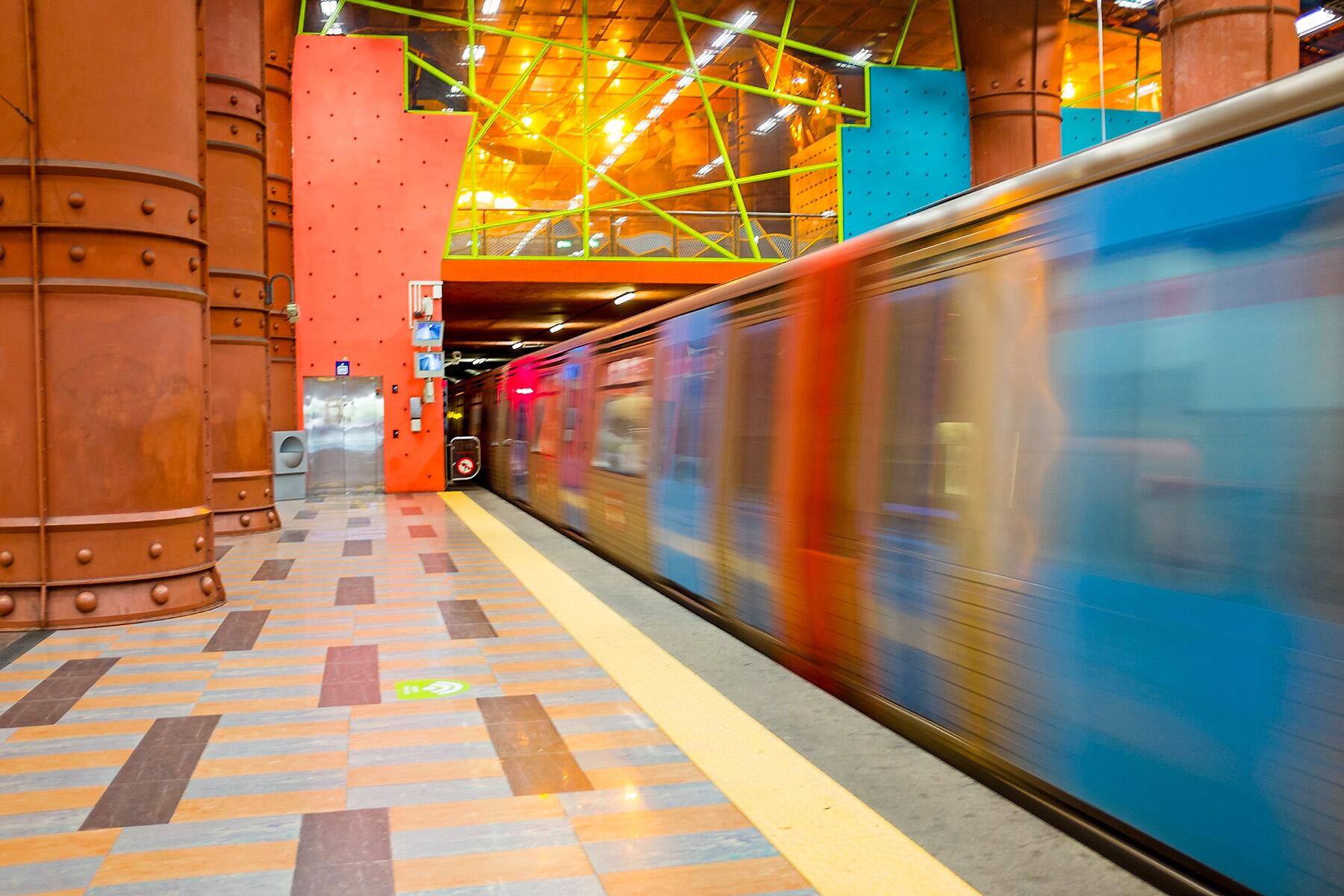From trams to ferries to the metro, there are many ways to get around Lisbon.
Welcome to Lisbon, an alluring and vibrant city where historic neighborhoods, captivating viewpoints, and delectable pastries enrapture your senses. Mastering Lisbon’s public transportation system is the key to confidently immersing yourself in the local experience.
Lisbon’s public transportation system is an efficient and cost-effective way to wander the famed seven hills, historic districts, and riverside areas. The primary modes of public transport include buses, trams, the metro, trains, ferries, and iconic funiculars. Each mode serves a specific purpose, offering a unique perspective on Lisbon’s diverse landscape. There are different ticket machines depending on what type of service you need to access.
In this comprehensive guide, I’ll walk you through each form of Lisbon’s public transportation, explain how to access each, advise on where to purchase tickets, and provide essential tips for a smooth travel experience.

How to Scale Lisbon’s Hills With Funiculars
Funiculars provide a unique and enjoyable way to ascend Lisbon’s hills while offering breathtaking views of the city below. Lisbon has three well-known funiculars, or elevators, called Elevador da Bica, Elevador da Glória, and the Elevador do Lavra. The Elevador da Bica is the focal point of countless postcards and images of Lisbon. What makes funiculars, reminiscent of trollies, so special are the unparalleled views you’ll experience once you reach the top. Designed by Portuguese engineer Raoul Mesnier de Ponsard, the three funiculars, and the Santa Justa Lift are must–sees day or night.
Top Picks for You
Recommended Fodor’s Video
INSIDER TIPAccess the funiculars with your Viva Viagem card. You can pay the driver in cash, but you’ll save a bit if you use the transportation card. You can also use the same card to access other public transportation in Lisbon.
Funicular stations are strategically located on steep hillsides. Elevador da Glória, for instance, connects Restauradores Square to Bairro Alto. Use your Viva Viagem card or purchase a specific ticket for the funicular at the station.
How to Navigate Lisbon’s Railway
Lisbon’s suburban railway trains, or comboios, connect the city to nearby destinations, making them ideal for day trips to municipalities like the picturesque Sintra or the beautiful beaches of Cascais. Major train stations in Lisbon include Santa Apolónia, Oriente, Rossio, and Cais do Sodré.
Each station serves different routes, so choose the most convenient one for your destination. Purchase train tickets at the station or online, depending on your preference. The Viva Viagem card is not applicable for suburban train travel, but you can use the Navegante card.

How to Ride Lisbon’s Metro
The Metro network is the backbone of Lisbon’s public transportation system, connecting districts with speed and efficiency. Known for its punctuality and cleanliness, it’s a comfortable option for getting around the city. With four lines, or linhas: azul (blue), amarela (yellow), verde (green), and vermelha (red), the metro is a convenient choice for navigating both the historic center and surrounding areas. The red line also provides direct access to Lisbon’s Humberto Delgado Airport (LIS).
Metro stations are easily identifiable by their large “M” signs. Stations are conveniently located throughout the city, ensuring accessibility for tourists and locals. Passengers with reduced mobility can find accessible stations on the network map. Purchase a rechargeable Viva Viagem card at metro stations or designated kiosks. The card allows easy tap-and-go access to all public transportation options in Lisbon, including metro, buses, and trams.
How to Ride the Bus in Lisbon
The Carris bus company crisscrosses Lisbon’s neighborhoods, providing an extensive network that reaches areas beyond the metro lines, enabling you to reach attractions or neighborhoods that might not be metro-accessible.
Bus stops are marked with clear signage indicating the routes served. Lisbon’s central bus terminal, Campo Grande, is a hub for accessing various parts of the city. Use the Viva Viagem card for bus travel. Simply tap your card upon boarding, and you’re good to go. Benefits: Buses offer a flexible and scenic way to explore the city, taking you through historic districts and offering an insider’s view of daily life in Lisbon.
INSIDER TIPIt can feel like Lisbon’s bus schedules are merely a suggestion. For a better experience, arrive 5-10 minutes before the designated time and signal for the bus to stop by waving it down.

How to Use Lisbon Trams
Trams provide a nostalgic and scenic journey through Lisbon’s narrow streets and landmarks. Lisbon’s iconic yellow trams are not just a mode of transport; they’re a cultural experience. Tram 28, in particular, winds its way through historic neighborhoods like Graça (miradouros) and Alfama (Lisbon’s oldest neighborhood and home of Fado), offering a front-row seat to Lisbon’s charming streets.
Tram stops are clearly marked, and Tram 28, running from Martim Moniz to Campo de Ourique, is a popular choice for tourists. Be prepared for crowds, especially during peak hours. The Mercado de Campo Ourique is a local alternative to the pricey but iconic Time Out Market. Another gem within the fleet of 58 vintage streetcars, Tram 15, takes you from Praça do Comércio to majestic Belém, the perfect opportunity to tour modern architecture, museums, parks, palaces, and two Unesco World Heritage Sites.
INSIDER TIPAs a rule of thumb, use the rear exit when leaving buses, trams, and trolleys.
Use the Viva Viagem card for trams. Given Tram 28’s popularity, consider buying your ticket in advance at metro stations or tram stops.

Riding the Lisbon Ferry
Transtejo Soflusa, referencing the Tejo River, is a ferry system with six terminals and three stations. The Cais do Sodré terminal boasts excellent connectivity to buses, trams, the metro, and railway stations. For one of the best views of Lisbon, take the ferry across to Seixal. There you’ll find top-tier seafood restaurants and unadulterated views of the riverfront. For access, stick along the Tejo River (Río Tejo) and use your Viva Viagem card or purchase a single or return ticket at the metro station.
Getting to and From Lisbon’s Airport
Lisbon Airport is well-connected to the city center, ensuring a hassle-free (and budget-friendly) journey upon arrival. The metro is the most efficient way to travel from the airport to the city center. You can reach the downtown area in as little as 25 minutes.
Follow the signs for the metro within the airport. The Aeroporto station is on the Linha Vermelha, or Red Line. Use your Viva Viagem card or purchase a single or return ticket at the metro station.
As you navigate Lisbon’s public transportation system, remember that the Viva Viagem card is your key to seamless travel. Embrace what each mode offers, from nostalgic and charming trams to the scenic views of the funiculars. For detailed schedules and route planning, the provided websites are valuable resources. So, hop on a tram, ride the metro, and ascend the hills with the funiculars — Lisbon awaits your presence! Enjoy your stay in this charming city, and may your journey be as delightful as a pastel de nata waiting for you at Manteigaria.



